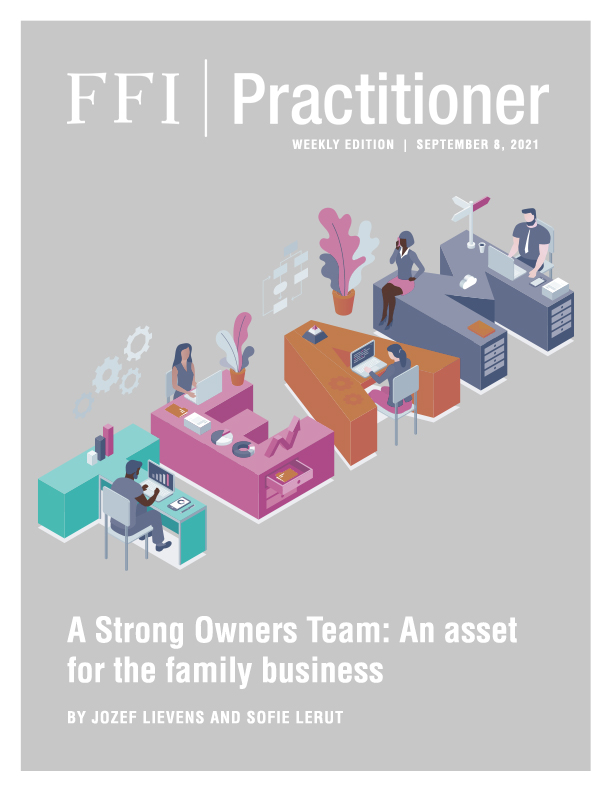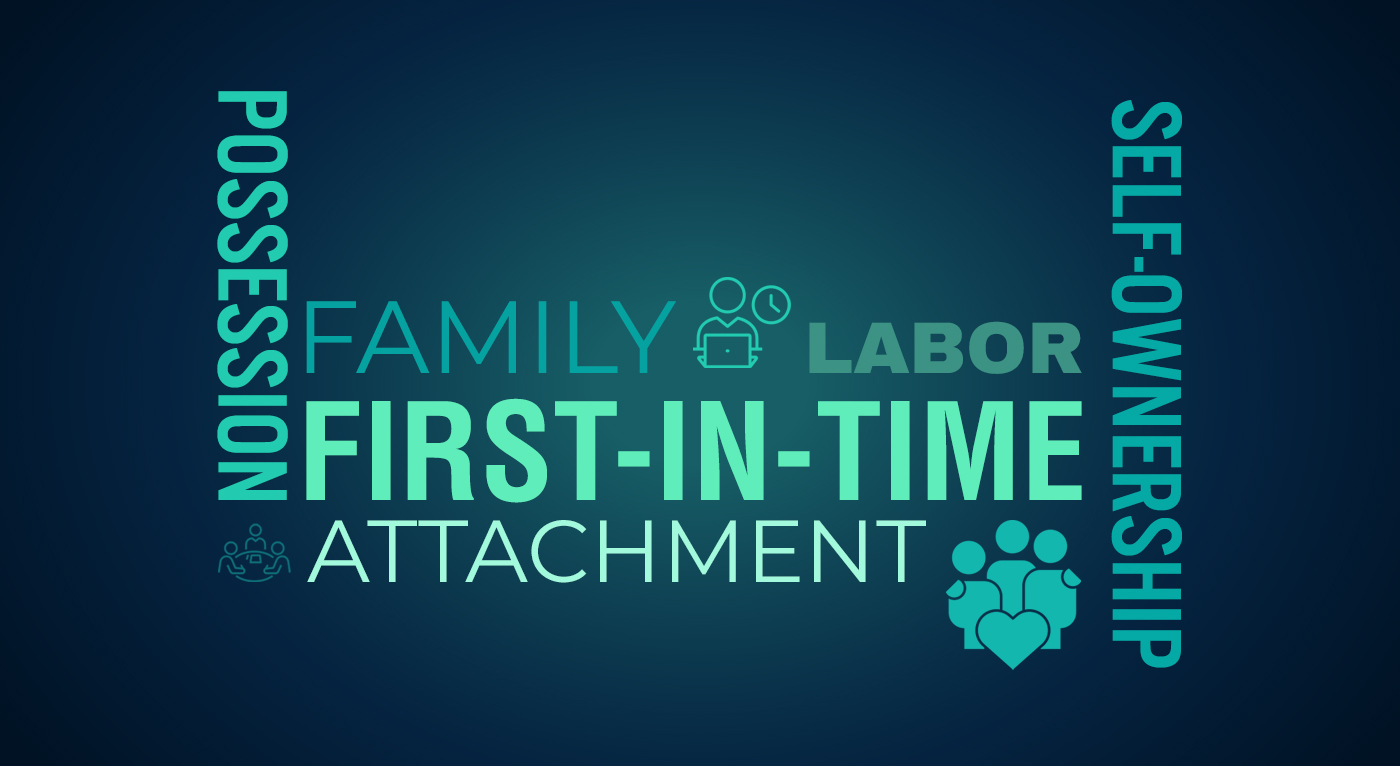
1. Introduction
Just like the management and the board of directors, the owners of a family business form a team.
Until now, little attention has been paid to the owners as a team, yet it is crucially important. The more cohesive the team, the greater the probability that it will provide a competitive advantage for the family business.
The literature on family businesses traditionally assumes that a team of owners comes into being when ownership reaches the second generation. In the first generation, the shares are typically held by one person, the founder. When the founder passes ownership to several children, they form a team. There are, however, teams of owners that belong to the first generation of a family business. This will be the case when a family business is founded by two siblings, for example.
It is striking to note how little attention has been paid to the great diversity found in ownership teams. The literature on family businesses invariably refers to sibling partnerships and cousin consortiums.
In our practice, however, we have observed that owners teams are (much) more varied.
In some cases, all team members are active as operational owners in the family business. It may even be that the ownership team is also the management team. This is the case, for example, with three siblings who run the family business and are also the owners.
Members of the ownership team who are not operationally active may take on governance roles, such as serving as a director of the business, chair of the family council, or other similar roles (e.g., head a philanthropic initiative).
As family business can vary widely in scale, so too can ownership teams.
Our practical experience and research indicate that the following factors increase the probability that a team of owners will be successful:
- The team must have a shared owners’ vision;
- The team members must display commitment and dedication;
- The team members must clearly allocate roles;
- Relations between the team members must be constructive; and
- It is essential to foster an efficient team organization.
2. A shared owners’ vision
Engaged owners are extremely important for a family enterprise. They provide patient capital, enabling the family business to develop a long-term strategy. However, engaged owners also must make clear to the management and the board of directors what they expect from the business. They should formulate and communicate a clear owners’ vision.
The owners’ vision is the reflection of the fundamental beliefs and expectations the family has with regards to the family enterprise. This shared vision is vitally important, because it indicates which path the family wants to follow with their business(es).

- The family’s ambition;
- The values they wish to be conveyed by the family business—these values constitute the identity of the family business;
- The financial returns they expect from the family business;
- Their expectations for the scope of the business’ strategy, its growth rate, and their comfort level with risk-taking;
- Their views on owner involvement in the family business: will the family be active as operational owners, as directors, or will they adopt another role?
- Their views regarding the governance and guidance of the family business.
3. Commitment and dedication
A robust team is expected to show commitment and dedication. Commitment and dedication can be demonstrated through several key elements:
- First, the owners must believe in the future of the family business. If they have doubts regarding the company’s direction, this could negatively impact their commitment and dedication.
- Second, the owners must have the will and the intention to ensure the continuity of the family business.
- Finally, this commitment and dedication needs to be reflected through owner behavior. For owners who are operationally active, this can be easier: they display this behavior through their—often assiduous—activity in the family business. For non-active owners, behavior could involve providing financial and reputational capital. They can also take on roles as directors, be active in the family governance, or simply be engaged and supportive owners.
Examples of such activities may include:
- Family meetings or family forums;
- Company visits;
- Training courses attended jointly;
- Joint philanthropic, cultural, or CSR initiatives; or
- The creation of a family website.
Sidebar

This week’s contributors are both presenting at the in-person FFI Global Conference, October 21-22 in London. Learn More and register today for the Conference.
4. Clearly allocated roles
In most cases, the members of the owners team do not confine themselves to merely being owners. They often also fulfill other roles in the family enterprise, such as:
- Director or Chairman of the board of directors
- CEO or another C-level position
- A member of the senior management team
- A staff member
- A family governance role (e.g., chair of the family council).
- The requirements that the owner has to fulfill these additional roles should be agreed upon and stated clearly.
- The tasks involved in fulfilling a given role should be clearly defined.
- Finally, it is important to establish to whom those who fulfill a given role are accountable.
5. Constructive relations
Owners teams can come to conflict because of a lack of constructive relations between the members. Interpersonal relations among the owners must be good enough to keep the ownership team sustainable.
Building constructive relationships within a team often requires the following six elements to be present:
- Trust
- Respect
- Communication
- Acceptance of differences between family members
- Conflict management and resolution
- Maintaining a culture of constructive feedback
6. Efficient team organization
The owners team must work efficiently. A functional team has several requirements:
- Regular meetings: The interaction between the members of the owners team is what keeps the collaboration working smoothly. Optimal interaction is only achieved when the owners team meets regularly. The frequency of such meetings varies from one family business to another. We believe that two meetings a month are essential to building a well-functioning team. In many cases, meetings will take place more often.
- Leadership: Does an owners team need a leader? This is not an easy question to answer. In practice, we see that leadership of an owners team can take a variety of forms:
- The real leader: he or she convenes the team, guides it, and has the casting vote;
- The chairman: his or her role is more procedural—leading the meetings, but adopting a more collaborative position than the real leader;
- The coordinator: his or her role is more logistical—convening the team, ensuring that a room is available, and so on.
- Decisiveness and fair process: Members of the owners team have to make decisions frequently. Developing an effective decision-making process is very important. The best result is achieved if a fair process is applied.
- Relations with other company leadership: The decisions taken by the owners team should be clearly communicated to the management teams, the board of directors, and the family forum. Clear arrangements need to be made within the owners team about who will be responsible for such communications.
- Making arrangements: It may be useful to record team arrangements in writing, for example in a “team charter.” In any case, it is certainly advisable to put down the owners’ vision on paper.
7. Conclusion
Similar to other teams, teams of owners often require practice working together to develop their teamworking skills and build cohesion. When working with their family enterprise clients, advisors should pay close attention to the dynamics they observe within the owners team and work with the family to improve the effectiveness of this important team.





